Citibank 2012 Annual Report Download - page 260
Download and view the complete annual report
Please find page 260 of the 2012 Citibank annual report below. You can navigate through the pages in the report by either clicking on the pages listed below, or by using the keyword search tool below to find specific information within the annual report.-
 1
1 -
 2
2 -
 3
3 -
 4
4 -
 5
5 -
 6
6 -
 7
7 -
 8
8 -
 9
9 -
 10
10 -
 11
11 -
 12
12 -
 13
13 -
 14
14 -
 15
15 -
 16
16 -
 17
17 -
 18
18 -
 19
19 -
 20
20 -
 21
21 -
 22
22 -
 23
23 -
 24
24 -
 25
25 -
 26
26 -
 27
27 -
 28
28 -
 29
29 -
 30
30 -
 31
31 -
 32
32 -
 33
33 -
 34
34 -
 35
35 -
 36
36 -
 37
37 -
 38
38 -
 39
39 -
 40
40 -
 41
41 -
 42
42 -
 43
43 -
 44
44 -
 45
45 -
 46
46 -
 47
47 -
 48
48 -
 49
49 -
 50
50 -
 51
51 -
 52
52 -
 53
53 -
 54
54 -
 55
55 -
 56
56 -
 57
57 -
 58
58 -
 59
59 -
 60
60 -
 61
61 -
 62
62 -
 63
63 -
 64
64 -
 65
65 -
 66
66 -
 67
67 -
 68
68 -
 69
69 -
 70
70 -
 71
71 -
 72
72 -
 73
73 -
 74
74 -
 75
75 -
 76
76 -
 77
77 -
 78
78 -
 79
79 -
 80
80 -
 81
81 -
 82
82 -
 83
83 -
 84
84 -
 85
85 -
 86
86 -
 87
87 -
 88
88 -
 89
89 -
 90
90 -
 91
91 -
 92
92 -
 93
93 -
 94
94 -
 95
95 -
 96
96 -
 97
97 -
 98
98 -
 99
99 -
 100
100 -
 101
101 -
 102
102 -
 103
103 -
 104
104 -
 105
105 -
 106
106 -
 107
107 -
 108
108 -
 109
109 -
 110
110 -
 111
111 -
 112
112 -
 113
113 -
 114
114 -
 115
115 -
 116
116 -
 117
117 -
 118
118 -
 119
119 -
 120
120 -
 121
121 -
 122
122 -
 123
123 -
 124
124 -
 125
125 -
 126
126 -
 127
127 -
 128
128 -
 129
129 -
 130
130 -
 131
131 -
 132
132 -
 133
133 -
 134
134 -
 135
135 -
 136
136 -
 137
137 -
 138
138 -
 139
139 -
 140
140 -
 141
141 -
 142
142 -
 143
143 -
 144
144 -
 145
145 -
 146
146 -
 147
147 -
 148
148 -
 149
149 -
 150
150 -
 151
151 -
 152
152 -
 153
153 -
 154
154 -
 155
155 -
 156
156 -
 157
157 -
 158
158 -
 159
159 -
 160
160 -
 161
161 -
 162
162 -
 163
163 -
 164
164 -
 165
165 -
 166
166 -
 167
167 -
 168
168 -
 169
169 -
 170
170 -
 171
171 -
 172
172 -
 173
173 -
 174
174 -
 175
175 -
 176
176 -
 177
177 -
 178
178 -
 179
179 -
 180
180 -
 181
181 -
 182
182 -
 183
183 -
 184
184 -
 185
185 -
 186
186 -
 187
187 -
 188
188 -
 189
189 -
 190
190 -
 191
191 -
 192
192 -
 193
193 -
 194
194 -
 195
195 -
 196
196 -
 197
197 -
 198
198 -
 199
199 -
 200
200 -
 201
201 -
 202
202 -
 203
203 -
 204
204 -
 205
205 -
 206
206 -
 207
207 -
 208
208 -
 209
209 -
 210
210 -
 211
211 -
 212
212 -
 213
213 -
 214
214 -
 215
215 -
 216
216 -
 217
217 -
 218
218 -
 219
219 -
 220
220 -
 221
221 -
 222
222 -
 223
223 -
 224
224 -
 225
225 -
 226
226 -
 227
227 -
 228
228 -
 229
229 -
 230
230 -
 231
231 -
 232
232 -
 233
233 -
 234
234 -
 235
235 -
 236
236 -
 237
237 -
 238
238 -
 239
239 -
 240
240 -
 241
241 -
 242
242 -
 243
243 -
 244
244 -
 245
245 -
 246
246 -
 247
247 -
 248
248 -
 249
249 -
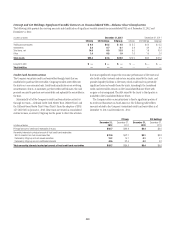 250
250 -
 251
251 -
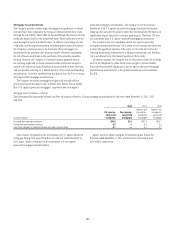 252
252 -
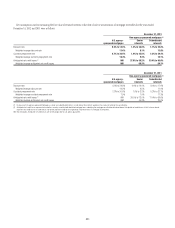 253
253 -
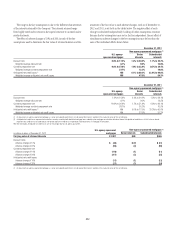 254
254 -
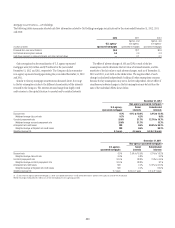 255
255 -
 256
256 -
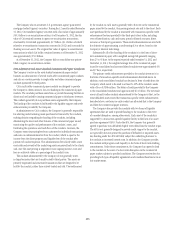 257
257 -
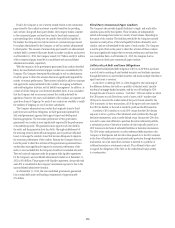 258
258 -
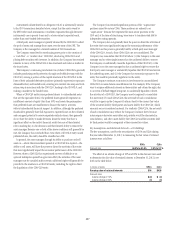 259
259 -
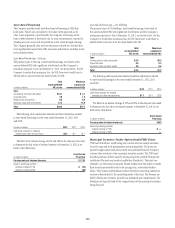 260
260 -
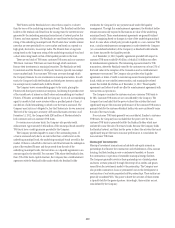 261
261 -
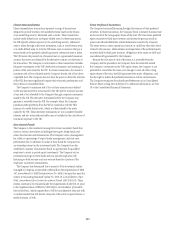 262
262 -
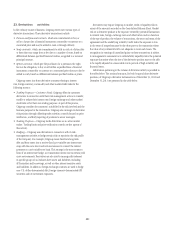 263
263 -
 264
264 -
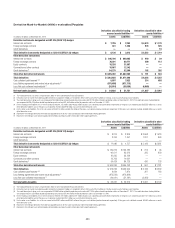 265
265 -
 266
266 -
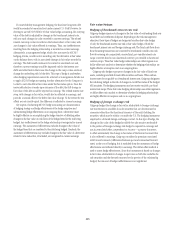 267
267 -
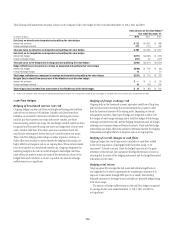 268
268 -
 269
269 -
 270
270 -
 271
271 -
 272
272 -
 273
273 -
 274
274 -
 275
275 -
 276
276 -
 277
277 -
 278
278 -
 279
279 -
 280
280 -
 281
281 -
 282
282 -
 283
283 -
 284
284 -
 285
285 -
 286
286 -
 287
287 -
 288
288 -
 289
289 -
 290
290 -
 291
291 -
 292
292 -
 293
293 -
 294
294 -
 295
295 -
 296
296 -
 297
297 -
 298
298 -
 299
299 -
 300
300 -
 301
301 -
 302
302 -
 303
303 -
 304
304 -
 305
305 -
 306
306 -
 307
307 -
 308
308 -
 309
309 -
 310
310 -
 311
311 -
 312
312 -
 313
313 -
 314
314 -
 315
315 -
 316
316 -
 317
317 -
 318
318 -
 319
319 -
 320
320 -
 321
321 -
 322
322 -
 323
323 -
 324
324
 |
 |

238
Asset-Based Financing
The Company provides loans and other forms of financing to VIEs that
hold assets. Those loans are subject to the same credit approvals as all
other loans originated or purchased by the Company. Financings in the
form of debt securities or derivatives are, in most circumstances, reported in
Trading account assets and accounted for at fair value through earnings.
The Company generally does not have the power to direct the activities that
most significantly impact these VIEs’ economic performance and thus it does
not consolidate them.
Asset-Based Financing—Citicorp
The primary types of Citicorp’s asset-based financings, total assets of the
unconsolidated VIEs with significant involvement and the Company’s
maximum exposure to loss at December 31, 2012, are shown below. For the
Company to realize that maximum loss, the VIE (borrower) would have to
default with no recovery from the assets held by the VIE.
In billions of dollars
Total
unconsolidated
VIE assets
Maximum
exposure to
unconsolidated VIEs
Type
Commercial and other real estate $16.1 $ 3.1
Corporate loans 2.0 1.6
Hedge funds and equities 0.6 0.4
Airplanes, ships and other assets 21.5 12.0
Total $40.2 $17.1
The following table summarizes selected cash flow information related
to asset-based financings for the years ended December 31, 2012, 2011
and 2010:
In billions of dollars 2012 2011 2010
Cash flows received on retained
interests and other net cash flows $0.3 $— $—
The effect of an adverse change of 10% and 20% in the discount rates used
to determine the fair value of retained interests at December 31, 2012 is set
forth in the table below:
In millions of dollars
Asset-based
Financing
Carrying value of retained interests $1,726
Value of underlying portfolio
Adverse change of 10% $ (22)
Adverse change of 20% (44)
Asset-Based Financing—Citi Holdings
The primary types of Citi Holdings’ asset-based financings, total assets of
the unconsolidated VIEs with significant involvement and the Company’s
maximum exposure to loss at December 31, 2012, are shown below. For the
Company to realize that maximum loss, the VIE (borrower) would have to
default with no recovery from the assets held by the VIE.
In billions of dollars
Total
unconsolidated
VIE assets
Maximum
exposure to
unconsolidated VIEs
Type
Commercial and other real estate $0.9 $0.3
Corporate loans 0.4 0.3
Airplanes, ships and other assets 2.9 0.6
Total $4.2 $1.2
The following table summarizes selected cash flow information related
to asset-based financings for the years ended December 31, 2012, 2011
and 2010:
In billions of dollars 2012 2011 2010
Cash flows received on retained
interests and other net cash flows $1.7 $1.4 $2.8
The effect of an adverse change of 10% and 20% in the discount rates used
to determine the fair value of retained interests at December 31, 2012 is set
forth in the table below:
In millions of dollars
Asset-based
Financing
Carrying value of retained interests $339
Value of underlying portfolio
Adverse change of 10% $ —
Adverse change of 20% —
Municipal Securities Tender Option Bond (TOB) Trusts
TOB trusts hold fixed- and floating-rate, taxable and tax-exempt securities
issued by state and local governments and municipalities. The trusts are
typically single-issuer trusts whose assets are purchased from the Company
or from other investors in the municipal securities market. The TOB trusts
fund the purchase of their assets by issuing long-term, putable floating rate
certificates (Floaters) and residual certificates (Residuals). The trusts are
referred to as TOB trusts because the Floater holders have the ability to tender
their interests periodically back to the issuing trust, as described further
below. The Floaters and Residuals evidence beneficial ownership interests in,
and are collateralized by, the underlying assets of the trust. The Floaters are
held by third-party investors, typically tax-exempt money market funds. The
Residuals are typically held by the original owner of the municipal securities
being financed.
